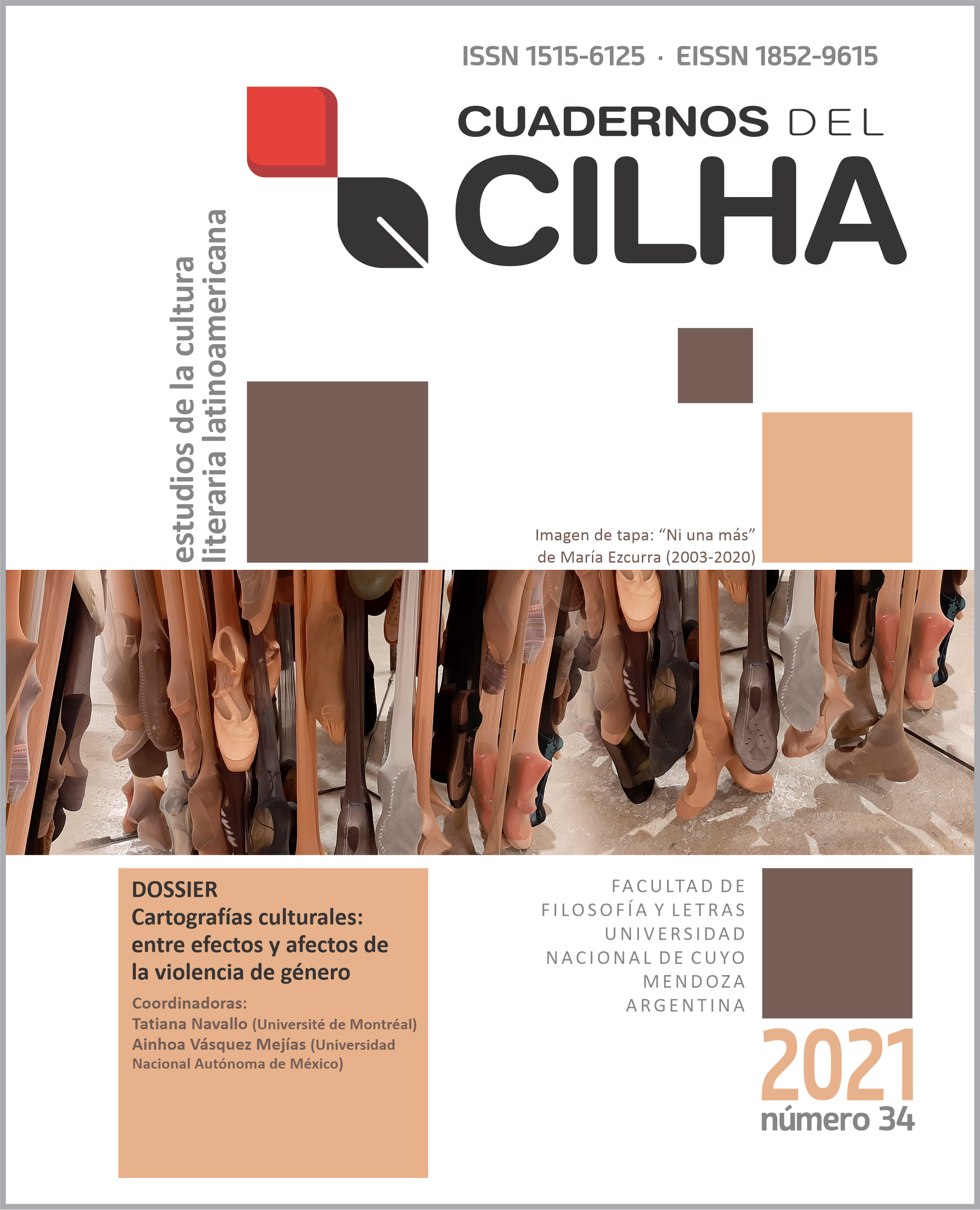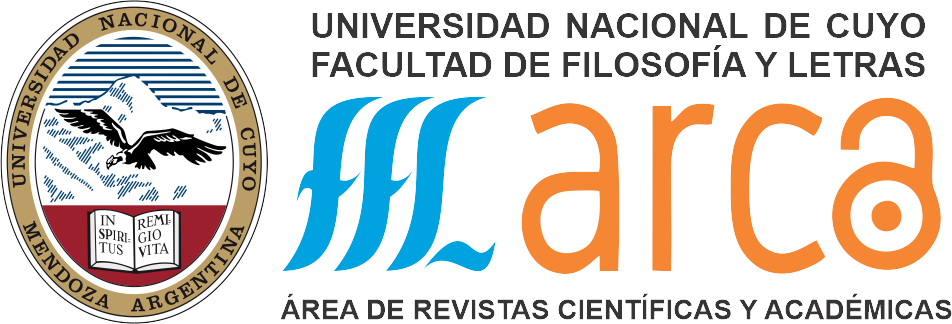The film La Llorona de Jayro Bustamante: Cultural Memory and Gender in the Guatemalan Transitional Justice
DOI:
https://doi.org/10.48162/rev.34.015Keywords:
Representation, Genocide, Gender, Transitional justice, Cultural memoryAbstract
This paper focuses on the analysis of the film La Llorona (2019), directed by Guatemalan filmmaker Jayro Bustamente and whose title, according to the popular legend, alludes to the woman who drowned her children and, as a result of guilt, searches for them at night near rivers and villages. La Llorona is, in this film, an indigenous woman who survived the Guatemalan genocide. As a maid, she enters in the house of General Enrique Monteverde, who functions as the alter ego of General Efraín Ríos Montt (1926-2018). The film focuses on the days in which General Monteverde is accused of the crime of genocide, being fundamental in my analysis the representation of the indigenous female victims, as well as the staging of the hierarchical coexistence in the space of the house. As anthropologist Aura Cumes argues, a power of domination among the women themselves persists in this domestic space, under the hierarchical relationship "señora-muchacha". My goal is to examine how in the film the film represents the scope and limitations of Guatemalan transitional justice in relation to the women victims of the genocide and, linked to this, the symbolic reconciliations of class and gender that are proposed.
References
Acevedo I. (Directora) (2016). El Buen Cristiano. [Película]. Centro de Capacitación Cinematográfico.
Aguilar C. (2020). Cómo la película de terror ‘la Llorona’ amplifica el mensaje de la activista indígena Rigoberta Menchú Tum. Los Angeles Times.
Ahmed, S. (2017). La política cultural de las emociones (C. Olivares Mansuy, Trad.). UNAM/Centro de Investigaciones y Estudios de Género.
Amaya Rossi, B. (2018). La construcción de la ciudadanía en las mujeres de Sepur Zarco, El Estor, Izabal (1982-2014). [Tesis de pregrado, Universidad Rafael Landívar].
http://recursosbiblio.url.edu.gt/tesiseortiz/2018/04/26/Amaya-Bettina.pdf
Assmann, A. (2011). Cultural Memory and Western Civilization: Functions, Media, Archives. Cambridge U.P.
Benítez Jiménez, M. A. (2015). Frente al genocidio: justicia transicional y movilización en Guatemala. Revista Latinoamericana de Estudios de Seguridad, 16, 37-52
https://doi.org/10.17141/urvio.16.2015.1808
Bloch-Robin M. (2021). La voz recobrada de los silenciados en La Llorona de Jayro Bustamante. Pandora 16, 165-181.
https://etudes-romanes.univ-paris8.fr/IMG/pdf/pandora_web_final.pdf
Bogle, D. (1999). Toms, Coons, Mulattoes, Mammies, and Bucks. An interpretative History of Blacks in American Films. Continuum.
Bracco, D. (2021). Indio, hueco, comunista. Aproximaciones a la trilogía de Jayro Bustamante Pandora 16, 109-131.
https://etudes-romanes.univ-paris8.fr/IMG/pdf/pandora_web_final.pdf
Burt, J.-M. (2019). From Heaven to Hell in Ten Days: the Genocide Trial in Guatemala. Journal of Genocide Research 18 (2-3), 143-169. https://www.tandfonline.com/doi/abs/10.1080/14623528.2016.1186437
Bustamante, J. (dir.) (2019). La Llorona. [Película]. La Casa de Producción, Les Films du Volcan.
CEH. (1999). Memoria del silencio. http://www.centrodememoriahistorica.gov.co/descargas/guatemala-memoria-silencio/guatemala-memoria-del-silencio.pdf
Cabezas Vargas, A. (2021). La Llorona de Jayro Bustamante: el ímpetu de las nuevas generaciones del cine guatemalteco. Pandora 16, 71-88.
https://etudes-romanes.univ-paris8.fr/IMG/pdf/pandora_web_final.pdf
Coto-Rivel, S. (2019). Relaciones entre testimonio, memoria y ficción en La Llorona. Avec: E. Díaz (dir.), Épreuve de composition au CAPES d´espagnol session 2021 Jayro Bustamante La Llorona, 2019 (págs. 119-134), Ellipses.
Cumes, A. (2012). Mujeres indígenas, patriarcado y colonialismo: un desafío a la segregación comprensiva de las formas de dominio. Anuario de Hojas de Warmi 17, 1-16. https://revistas.um.es/hojasdewarmi/issue/view/10841
Crosby, A. et al. (2016). Carrying a Heavy Load: Mayan Women´s Understandings of Reparation in the Aftermath of Genocide. Journal of Genocide Research 18 (2-3), 265-283. https://www.tandfonline.com/doi/abs/10.1080/14623528.2016.1186952
Charlery H. (2011). Burning Mississippi: Race, Fatherhood and the South in A Time to Kill. Miranda 5, 1-15 https://doi.org/10.4000/miranda.2343
Dary, C. (2019). La explosión pentecostal: Perspectivas analíticas sobre la transformación religiosa en Guatemala. Ciencias Sociales y Humanidades. 6 (2), 85-99. https://doi.org/10.36829/63CHS.v6i2.828
Díaz, C. (Director) (2019). Nuestras madres. [Película]. Need Productions, Perspective Films.
García P. (2021). La Llorona de Jayro Bustamante: una interpretación mítica de la violencia. Pandora 16, 37-53.
Goldman, F. (2007). The Art of Political Murder. Grove Press.
Derrida, J. (1993). Spectres de Marx. Editions Galilée.
Hamber, B. (2009). Transforming Societies after Political Violence. Springer International Publishing.
Harms, P. (2020). Ladina Social Activism in Guatemala. University of New Mexico Press.
Hernández O. (2 de febrero de 2015). La justicia de los perrajes. Plaza Pública. https://www.plazapublica.com.gt/content/la-justicia-de-los-perrajes
International Center for Transitional Justice. What is Transitional Justice https://www.ictj.org/about/transitional-justice
Kabous, M. “Que viaje sea lindo”, potencia estérica y significativa del encuadre y del travelling en La Llorona. Pandora, 16, 185-201.
https://etudes-romanes.univ-paris8.fr/IMG/pdf/pandora_web_final.pdf
Landsberg, A. (2004). Prosthetic Memory: The Transformation of American Remembrance in the Age of Mass Culture. Columbia University Press.
Latán, S. (comunicación personal, 13 de mayo de 2021).
Mahlke, K. (2020). El modo fantástico y las narrativas del terror. En R. Spiller et al (Eds.) Trauma y memoria cultural Hispanoamérica y España (págs. 321-336), Gruyter.
https://dx.doi.org/10.1515/9783110420760-020
Martínez. D., Gómez L. (abril, 2019). Las reparaciones para víctimas del conflicto armado en Guatemala: una propuesta por cumplir. Reparations, Responsability & Victimhood in Transitional Societies
https://reparations.qub.ac.uk/assets/uploads/Guatemalan-Report-ESP-LR-1.pdf
Marcus, S. (1992). Fighting Bodies, Figthing Words: A Theory and Politics of Rape Prevention. In: J. Butler, J. W. Scott (eds.), Feminists: Theorize the Political (pp. 385-403) Routdlege.
Morales, J.R. (2007). Religión y espiritualidad maya. En: S. Bastos, A. Cumes, A. (Eds.). Mayanización y vida cotidiana. La ideología multicultural en la sociedad guatemalteca. Vol. 3. FLACSO-CIRMA-Cholsamaj.
Oglesby E., Neslon, M. D. Guatemala´s Genocide Trial and the Nexus of Racism and Counterinsurgency. Journal of Genocide Research 18 (2-3), 133-142. https://www.tandfonline.com/doi/full/10.1080/14623528.2016.1186436
ODHAG (1999). Informe proyecto interdiocesano de recuperación de la memoria histórica. Tomo I, Impactos de la violencia.
Orellana, C. G. (2020). Espectros de justicia: reflexiones a partir de La Llorona de Jayro Bustamante.
https://azacuan.com/titulares/reflexiones-a-partir-de-la-llorona-de-jayro-bustamante/
Ramos Alquezar, S. (2021) Justicia espectral: violencia política y género fantástico en el cine latinoamericano actual. Pandora, 16, 71-88.
https://etudes-romanes.univ-paris8.fr/IMG/pdf/pandora_web_final.pdf
Saban, K. (2020). El testimonio hispanoamericano. En: R. Spiller et al. (Eds.), Trauma y memoria cultural eh Hispanoamérica y España (págs. 279-292). De Gruyter.
Sturken, M. (1997). Tangled Memories: The Vietnam War, the Aids Epidemic, and the Politics of Remembering. Univ. Of California Press.
Thibaudeau, P. Umbrales, franqueamientos y flujos espectrales en La Llorona de Jayro Bustamante. Pandora 16, 135-148.
https://etudes-romanes.univ-paris8.fr/IMG/pdf/pandora_web_final.pdf
Zamora, M. (Dir.) (2013). Las muchachas. [Película]. El Faro.





















